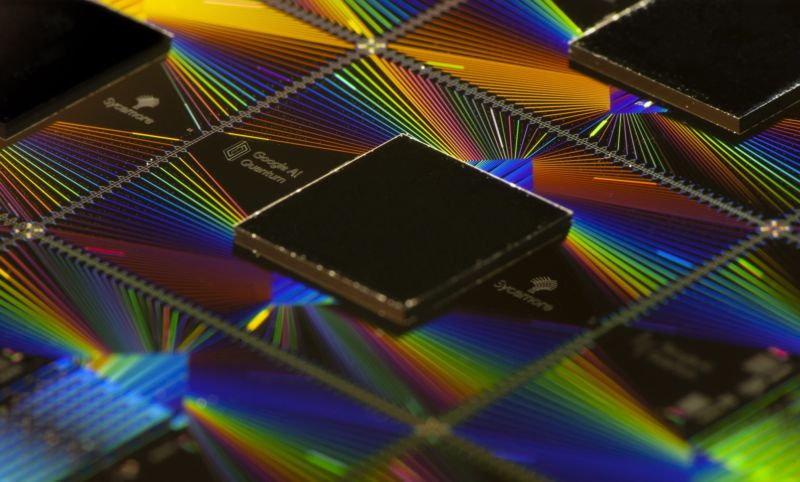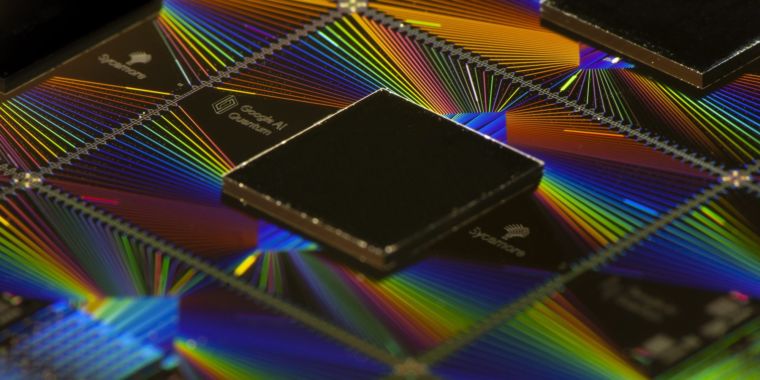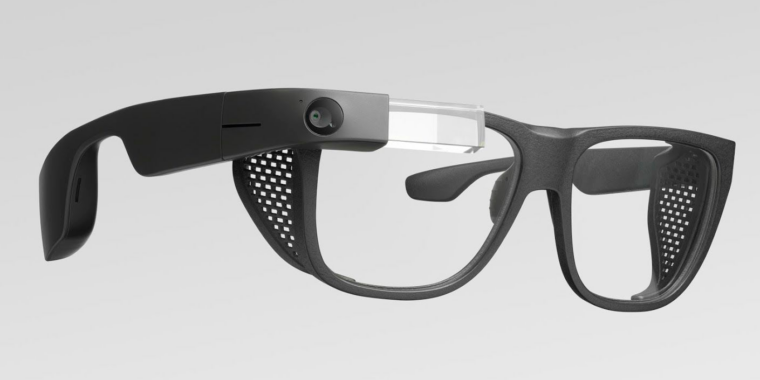
Recently, when researchers were testing error correction on Google’s quantum processor, they noted an odd phenomenon where the whole error-correction scheme would sporadically fail badly. They chalked this up to background radiation, a combination of cosmic rays and the occasional decay of a naturally occurring radioactive isotope.
It seemed like a bit of an amusing aside at the time—Google having accidentally paid for an extremely expensive cosmic ray detector. But the people behind the processor took the problem very seriously and are back with a new paper that details exactly how the radiation affects the qubits. And they conclude that the problems caused by cosmic rays happen often enough to keep error-corrected quantum computations from working unless we figure out a way to limit the rays’ impact.
It’s a shame about the rays
Cosmic rays and radioactivity cause problems for classical computing hardware as well. That’s because classical computers rely on moving and storing charges, and cosmic rays can induce charges when they impact a material. Qubits, in contrast, store information in the form of the quantum state of an object—in the case of Google’s processor, a loop of superconducting wire linked to a resonator. Cosmic rays affect these, too, but the mechanism is completely different.
The impact of a cosmic ray also creates vibrational energy, which takes the form of what are called phonons. These phonons can also group together to form quasiparticles, in which small collections of phonons group together and start behaving like a single particle with distinct properties. It’s these quasiparticles that cause havoc, since they can exchange energy with the quantum computing hardware. This can include the Cooper pairs of electrons (another type of quasiparticle) that form the foundation for superconductivity. Or the qubit itself, changing its state and disrupting any entanglement.
If these phonons only affected a single qubit, then the situation wouldn’t be a problem—in fact, it would be exactly the sort of thing that quantum error correction is meant to handle. Quantum error correction involves distributing quantum information across multiple entangled qubits, allowing the hardware to identify when one of the qubits is misbehaving.
The problem is that the quasiparticles won’t end up localized; instead, they should spread out around their site of origin and end up affecting multiple qubits. And that should be enough to interfere with error correction. So, some of the same people who had implemented the error correction in the earlier paper got together with some physicists and decided to see if this is actually what’s happening in the quantum processing hardware.
In the chips
To look at what’s going on, the Google team chose 26 of the least error-prone qubits on its processor and set them all in a single quantum state. Then, the researchers could let the processor idle for a short amount of time and see whether the qubits were still in that state.
Cosmic-ray hits were pretty easy to identify. After allowing the processor to idle for 100 microseconds, the typical background error rate was about four of the 26 qubits. When a cosmic ray happened to hit, about 24 of the qubits ended up in the error state—despite the fact that each qubit was about a millimeter apart from its neighbors.
To confirm this was due to quasiparticles, the researchers looked for a state dependence. The quasiparticles are expected to quickly lose energy and so won’t be able to transfer enough to raise a qubit from its ground state to its excited state. But they can still absorb energy from the qubit, allowing qubits in the excited state to drop back down to the ground state. So, if quasiparticles are mediating these interactions, you’d expect more errors when all the qubits start out in the excited state than when they all start out in the ground state. And that’s exactly what the research team saw.
Because the quantum processor can sample the qubits’ states very quickly, the team could even track the spread of errors across the processor. Initially, errors are largely confined to the nearest qubits to the cosmic-ray impact. But, even as the error rate here begins to drop, qubits that are further from the point of impact start to see their error rates go up as the phonons spread out across the chip. Before things drop back to background, every qubit in the device typically sees its average error rate rise.





